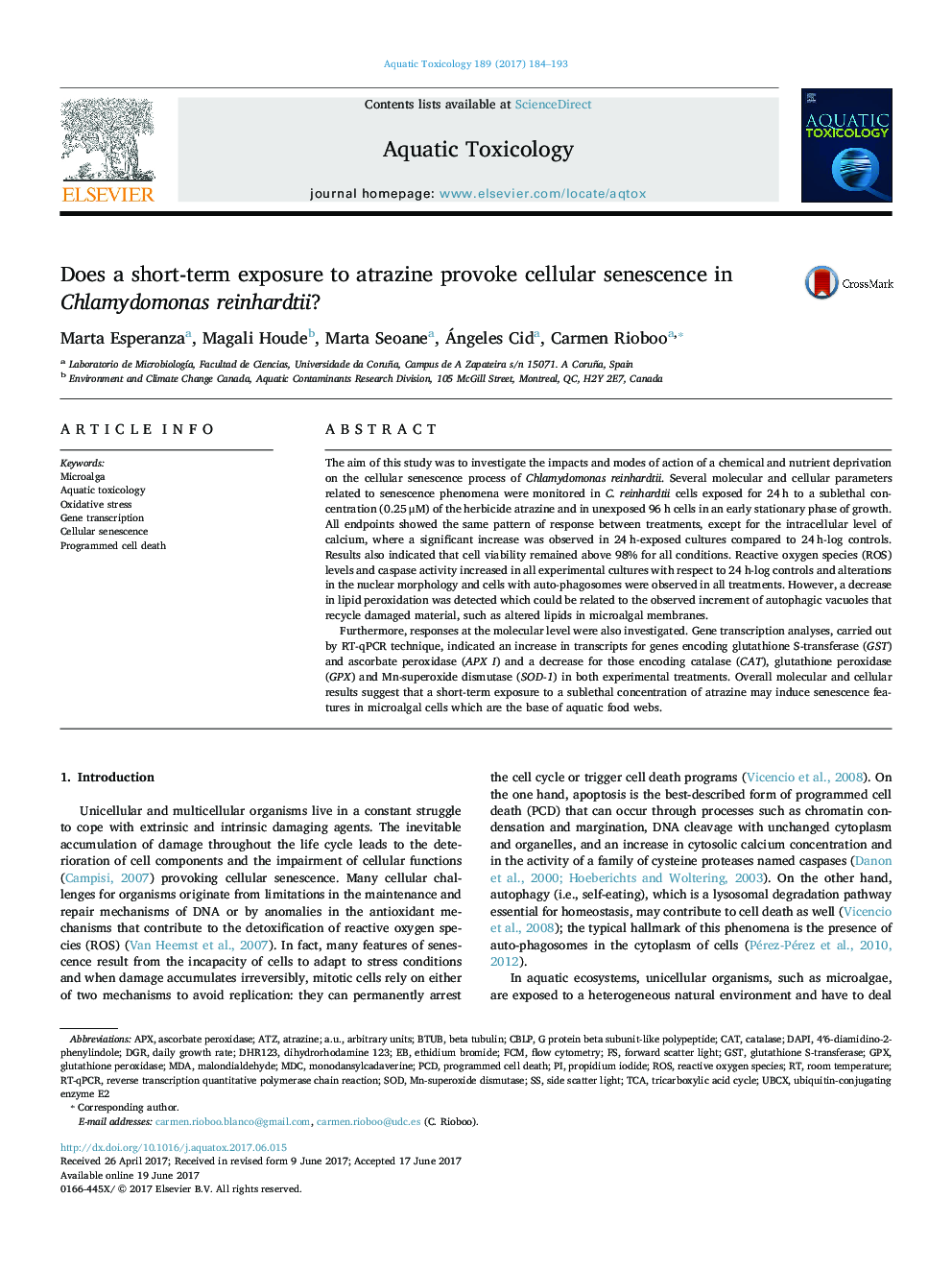| Article ID | Journal | Published Year | Pages | File Type |
|---|---|---|---|---|
| 5764186 | Aquatic Toxicology | 2017 | 10 Pages |
Abstract
Furthermore, responses at the molecular level were also investigated. Gene transcription analyses, carried out by RT-qPCR technique, indicated an increase in transcripts for genes encoding glutathione S-transferase (GST) and ascorbate peroxidase (APX I) and a decrease for those encoding catalase (CAT), glutathione peroxidase (GPX) and Mn-superoxide dismutase (SOD-1) in both experimental treatments. Overall molecular and cellular results suggest that a short-term exposure to a sublethal concentration of atrazine may induce senescence features in microalgal cells which are the base of aquatic food webs.
Keywords
FCMBtuBMDABeta tubulinDGRDHR123PCDA.U.MDCDAPIAPXRT-qPCRGPXGSTTCAATZCAT4′6-diamidino-2-phenylindoleROSatrazineethidium bromideOxidative stressRoom temperaturedihydrorhodamine 123reverse transcription quantitative polymerase chain reactionGene transcriptionSODAquatic toxicologyFlow cytometrymalondialdehydeProgrammed cell deathMn-Superoxide dismutaseMonodansylcadaverineMicroalgaDaily growth ratearbitrary unitsascorbate peroxidasePropidium iodideCellular senescencetricarboxylic acid cycleCatalaseglutathione S-transferaseglutathione peroxidaseReactive oxygen species
Related Topics
Life Sciences
Agricultural and Biological Sciences
Aquatic Science
Authors
Marta Esperanza, Magali Houde, Marta Seoane, Ángeles Cid, Carmen Rioboo,
